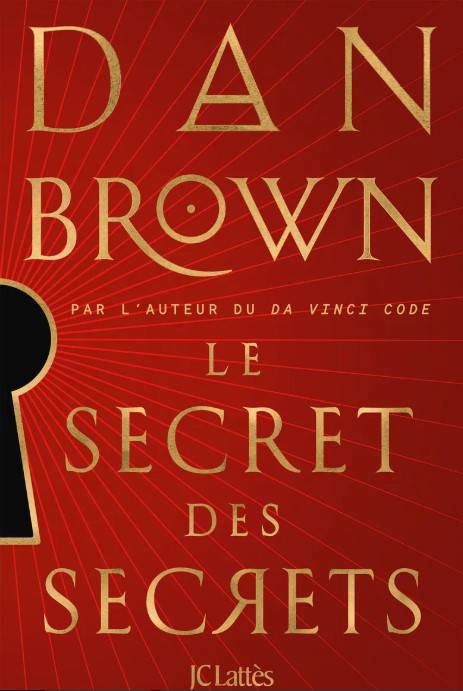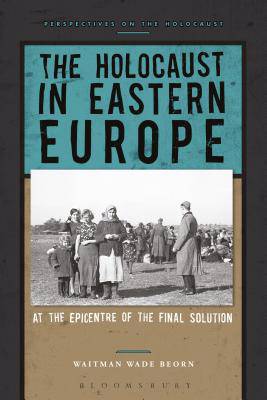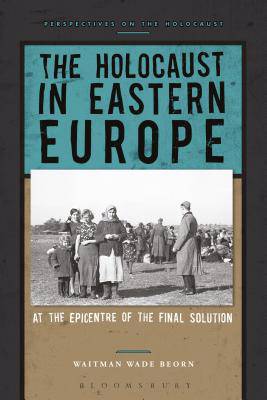
- Retrait gratuit dans votre magasin Club
- 7.000.000 titres dans notre catalogue
- Payer en toute sécurité
- Toujours un magasin près de chez vous
- Retrait gratuit dans votre magasin Club
- 7.000.0000 titres dans notre catalogue
- Payer en toute sécurité
- Toujours un magasin près de chez vous
203,95 €
+ 407 points
Format
Description
Waitman Wade Beorn's The Holocaust in Eastern Europe provides a comprehensive history of the Holocaust in the region that was the central location of the event itself while including material often overlooked in general Holocaust history texts.
First introducing Jewish life as it was lived before the Nazis in Eastern Europe, the book chronologically surveys the development of Nazi policies in the area over the period from 1939 to 1945. This book provides an overview of both the German imagination and obsession with the East and its impact on the Nazi genocidal project there. It also covers the important period of Soviet occupation and its effects on the unfolding of the Holocaust in Eastern Europe. This text also treats in detail other themes such as ghettoization, the Final Solution, rescue, collaboration, resistance, and many others. Throughout, Beorn includes detailed examples of the similarities and differences of the nature of the Holocaust in various regions, in the words of perpetrators, witnesses, collaborators, and victims/survivors.
Beorn also illustrates the complex nature of the Holocaust by discussing the difficult subjects of collaboration, sexual violence, the use of slave labour, treatment of Soviet POWs, profiteering and others within a larger narrative framework. He also explores key topics like Jewish resistance, Jewish councils, memory, and explanations for perpetration, collaboration, and rescue. The book includes images and maps to orient the reader to the topic area.
This important book explains the brutality and complexity of the Holocaust in the East for all students of the Holocaust and 20th-century Eastern European history.
First introducing Jewish life as it was lived before the Nazis in Eastern Europe, the book chronologically surveys the development of Nazi policies in the area over the period from 1939 to 1945. This book provides an overview of both the German imagination and obsession with the East and its impact on the Nazi genocidal project there. It also covers the important period of Soviet occupation and its effects on the unfolding of the Holocaust in Eastern Europe. This text also treats in detail other themes such as ghettoization, the Final Solution, rescue, collaboration, resistance, and many others. Throughout, Beorn includes detailed examples of the similarities and differences of the nature of the Holocaust in various regions, in the words of perpetrators, witnesses, collaborators, and victims/survivors.
Beorn also illustrates the complex nature of the Holocaust by discussing the difficult subjects of collaboration, sexual violence, the use of slave labour, treatment of Soviet POWs, profiteering and others within a larger narrative framework. He also explores key topics like Jewish resistance, Jewish councils, memory, and explanations for perpetration, collaboration, and rescue. The book includes images and maps to orient the reader to the topic area.
This important book explains the brutality and complexity of the Holocaust in the East for all students of the Holocaust and 20th-century Eastern European history.
Spécifications
Parties prenantes
- Auteur(s) :
- Editeur:
Contenu
- Nombre de pages :
- 356
- Langue:
- Anglais
- Collection :
Caractéristiques
- EAN:
- 9781474232197
- Date de parution :
- 08-02-18
- Format:
- Livre relié
- Format numérique:
- Genaaid
- Dimensions :
- 156 mm x 234 mm
- Poids :
- 671 g

Les avis
Nous publions uniquement les avis qui respectent les conditions requises. Consultez nos conditions pour les avis.






